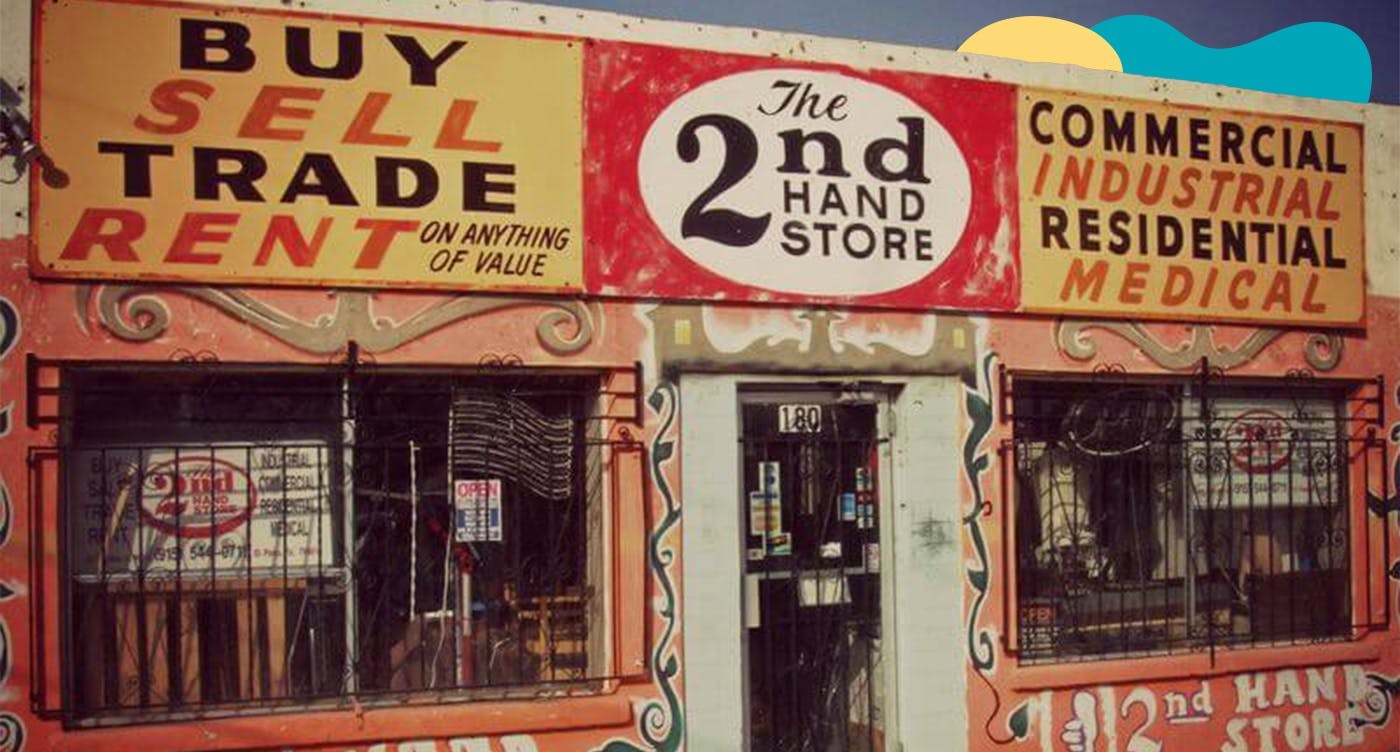TAX • 4 JUNE 2025 • 3 MIN READ
VAT on second-hand goods explained

SECTIONS
VAT on second-hand goods
How much can I claim back?
Keeping records
VAT Margin Scheme
Need help with your VAT returns?
Let’s say you’re running a landscaping business and want to purchase a lawnmower. You decide to save on costs and buy a pre-owned one. Chances are, you’ll find yourself asking 'how do I deal with the VAT on second-hand goods?'
We often receive questions from business owners on this topic. What if you’re not VAT-registered? What if the seller doesn’t provide a tax invoice? How much can you claim back?
Things can get tricky, so let’s cover the basics.
VAT on second-hand goods
In the UK, purchasing second-hand goods generally falls into one of the two categories:
- Supplies from a non-registered entity
- Taxable supplies
Supplies from a non-registered entity
If you purchase second-hand goods from an entity that is not registered for VAT (such as a private individual on Facebook Marketplace), you can’t claim VAT back on the purchase. These goods should be categorised as ‘zero-rated’ when recording the transaction and preparing your VAT return.
Taxable supplies
When you purchase second-hand goods from an entity that is registered for VAT, and you have a valid tax invoice, you can claim back the VAT on your VAT return.
How much can I claim back?
To get the VAT portion of your purchase, for standard-rated purchases take the total price paid and divide by 6. For reduced-rated purchases, take the total price paid and divide by 21. You should pay through your business bank account and treat it as a business purchase, as well as a VAT purchase in your software.
For example, if you purchase a second-hand printer for £120, the standard rated VAT portion would be £120/6= £20. You would then be able to claim £20 from HMRC in your next VAT return.
When purchasing from someone who isn’t VAT registered, you won’t receive a VAT invoice, and there will be no VAT incurred on the items you buy. In this case, you wouldn’t be able to reclaim any VAT from HMRC in your next VAT return.
To make claims for VAT on second-hand goods, you need to have fully paid for the goods. It’s also important to keep documentation such as the purchase invoice.
Keeping records
You need to keep appropriate records in order to claim VAT. If you purchase from a person who’s not registered for VAT, a tax invoice is not required. However, you should still document the following:
- Name and address of the supplier
- Date of purchase
- Description of goods
- Quantity of goods
- Price paid
If you purchase second-hand goods from a VAT-registered entity, you’ll need to keep a valid invoice. A valid VAT invoice should include the following information:
- Name and address of the supplier
- VAT registration number of the supplier
- Name and address of the purchaser
- Tax point date (date of supply)
- Invoice number
- Invoice date
- Description of goods
- Quantity of goods
- Net amount
- VAT amount
VAT Margin Scheme
If you’re VAT-registered and purchase second-hand goods for resale from a non-registered entity, you will not be able to claim VAT on the purchase. However, you will still need to charge VAT on the sales. Some goods are eligible for the VAT Margin Scheme.
Goods covered by the scheme are:
- Second-hand goods
- Works of art
- Antiques
- Collectors items
Rather than the full selling price, you can use the VAT Margin Scheme and pay VAT based on the difference between what you paid for an item, and what you sold it for.
For more details of the VAT Margin Scheme, or advice regarding VAT on second-hand goods, get in touch with us.
Need help with your VAT returns?
If you're using Xero or QuickBooks and need a hand with your VAT filing, book a call with us. We can help with your year-end accounts and take VAT returns off your plate.
About Beany
Beany are accountants for ambitious businesses, delivering big firm expertise without the big cost. We handle everything accounting-related (such as annual compliance, bookkeeping, financial insights and strategy), and help business owners make smarter decisions for their business and lifestyle through our responsive, friendly expertise.
Charlotte Wass
General Manager, Beany UK
Chartered Accountant and Chartered Tax Adviser based in London. I love autumn, otters and Malteasers, and I hate spiders, peanut butter and the London Underground.
subscribe + learn
Beany Resources delivered straight to your inbox.
Beany Resources delivered straight to your inbox.
Share:
Related resources
VAT guide for UK business owners
April, 2025Value Added Tax (VAT) is a tax on most goods and services sold by businesses.
How (and when) to register for VAT
October, 2022VAT is a tax on most goods and services in the UK. How does VAT work? When should you register or deregister?
How do VAT penalties work?
September, 2023Dive into how VAT penalties work with our comprehensive guide. Learn the ins and outs of how it works, certain exem...